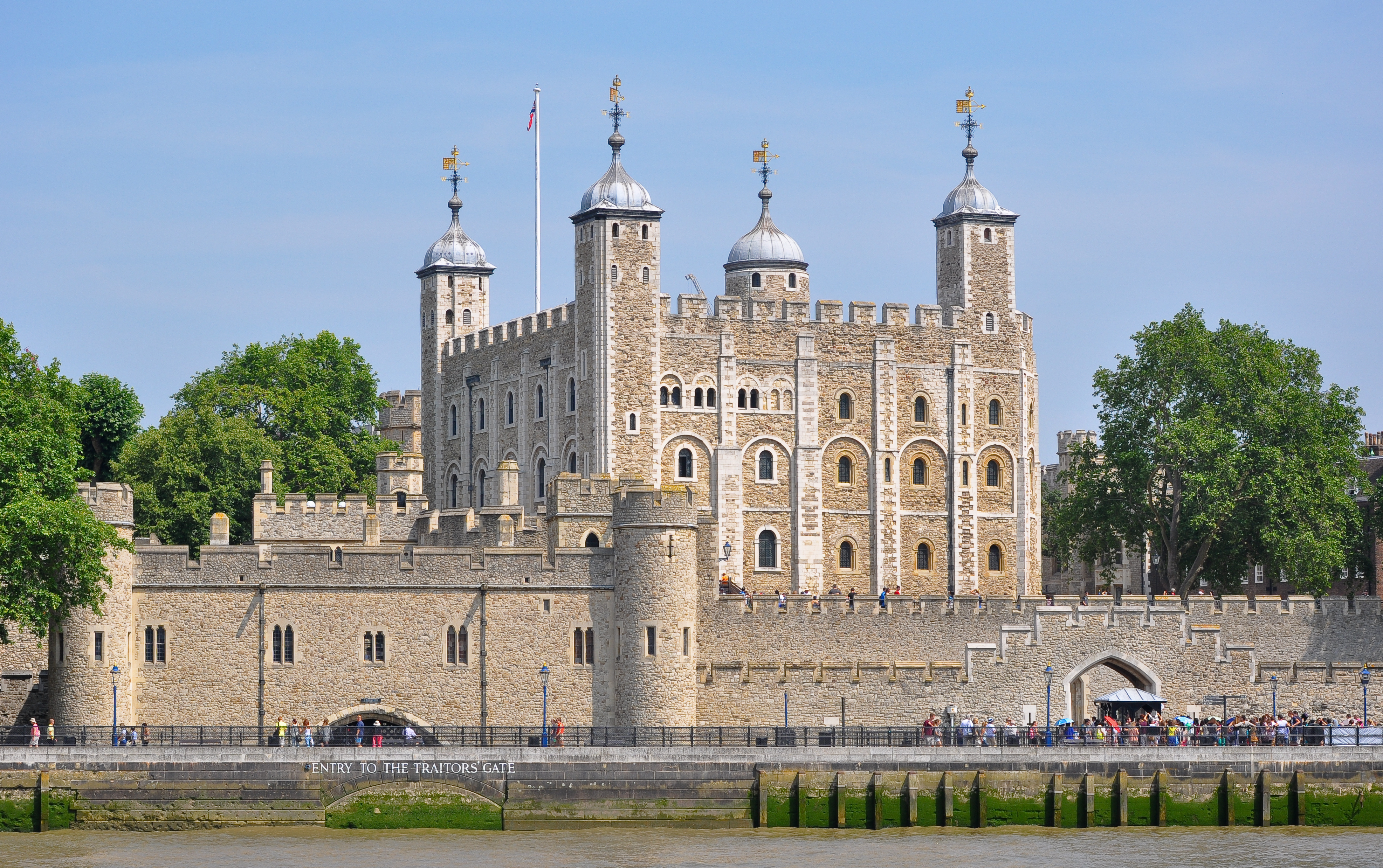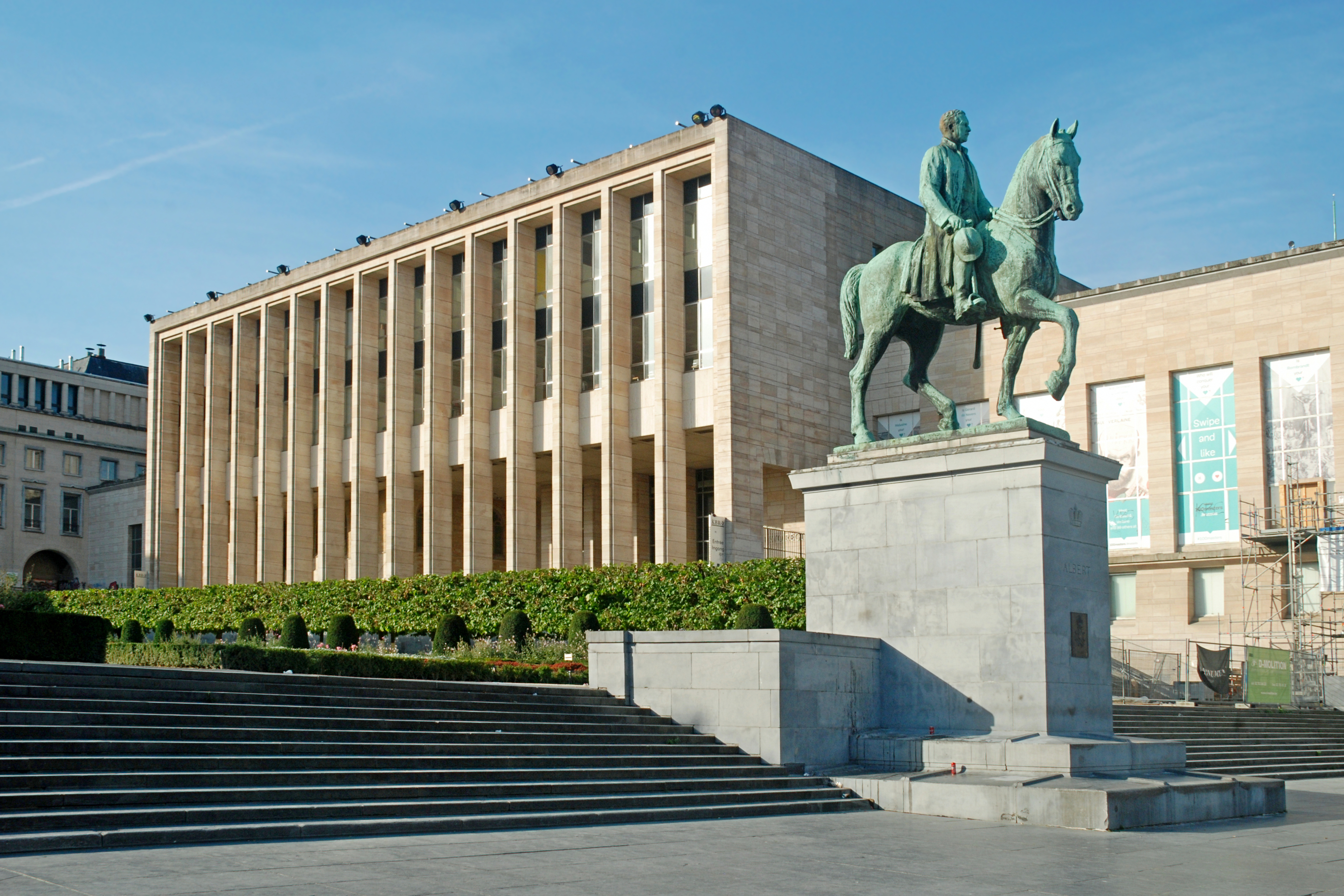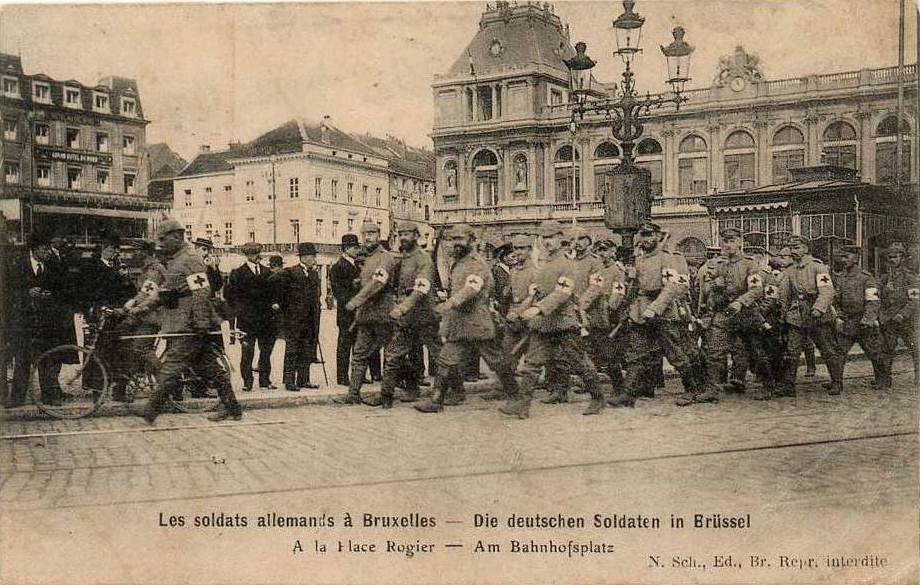|
Loppem Castle
Loppem Castle ( nl, Kasteel van Loppem) is a mansion situated in Loppem in the municipality of Zedelgem, near Bruges in West Flanders, in the Flemish Region of Belgium. Unusually, it preserves its original architecture and interior decoration. The castle has a richly decorated and furnished interior, and houses a collection of works of art (paintings, stained glass, statuary). It is surrounded by a romantic park with ponds and a maze, which has itself been designated a protected heritage landscape. The castle and park are now owned by the ''Stichting Jean van Caloen'' ("Jean van Caloen Foundation") and have been open to the public since 1975. History The castle was built between 1859 and 1862 for Baron Charles van Caloen and his family, to designs by architects E.W. Pugin and Jean-Baptiste Bethune. It is considered a masterpiece of Gothic Revival architecture. In late 1917, during the German Occupation, the castle was requisitioned for the use of a German general and his staf ... [...More Info...] [...Related Items...] OR: [Wikipedia] [Google] [Baidu] |
Zedelgem
Zedelgem (; vls, Zillegem) is a municipality located in the Belgian province of West Flanders. The municipality comprises the villages of Aartrijke, Loppem, Veldegem and Zedelgem proper. On January 1, 2019, Zedelgem had a total population of 22,813. The total area is which gives a population density of . Zedelgem and the surrounding area was home to a prisoner-of-war camp towards the end of World War II. Although the camp was disbanded and prisoners released after the war, the site remained military domain until 1994. It is now a nature park. Notable people * (1902–1994), writer. See also * New Holland Agriculture Gallery File:Aartrijke - Brouwerij De Leeuw - België.jpg, in Aartrijke File:Loppem, parochiekerk Sint Martinus oeg209818 met begraafplaats oeg209871 foto6 2015-09-28 10.01.jpg, Church and churchyard in Loppem File:Loppem kasteel 01.jpg, Loppem Castle in Loppem File:209809 Loppem Abdijhoek Betonnen kazematten.JPG, Concrete casemate A casemate is a for ... [...More Info...] [...Related Items...] OR: [Wikipedia] [Google] [Baidu] |
Jean-Baptiste Bethune (architect)
Jean-Baptiste Bethune {April 25, 1821 - June 18, 1894) was a Belgian architect, artisan and designer who played a pivotal role in the Belgian and Catholic Gothic Revival movement. He was called by some the "''Pugin of Belgium''", with reference to the influence on Bethune of the English Gothic Revival architect and designer, Augustus Pugin. Life Jean Bethune was the eldest son of baron Felix Bethune, a textile merchant in Kortrijk and his wife, Julie de Renty (1791-1856), from Lille. His family was Flemish of French origin. He and his relatives were fervent Catholics, and many were active in politics and civil service. The family which was originally called "Bethune" was in 1845 granted nobility by the Belgian King and added the preposition "de" (some of them took the name "de Béthune-Sully"), in the 20th century, to underline their noble status. However, this great architect never used the particule. His Irish home teacher Michel Breen first introduced him to history and ... [...More Info...] [...Related Items...] OR: [Wikipedia] [Google] [Baidu] |
Historic House Museums In Belgium
History (derived ) is the systematic study and the documentation of the human activity. The time period of event before the invention of writing systems is considered prehistory. "History" is an umbrella term comprising past events as well as the memory, discovery, collection, organization, presentation, and interpretation of these events. Historians seek knowledge of the past using historical sources such as written documents, oral accounts, art and material artifacts, and ecological markers. History is not complete and still has debatable mysteries. History is also an academic discipline which uses narrative to describe, examine, question, and analyze past events, and investigate their patterns of cause and effect. Historians often debate which narrative best explains an event, as well as the significance of different causes and effects. Historians also debate the nature of history as an end in itself, as well as its usefulness to give perspective on the problems of the p ... [...More Info...] [...Related Items...] OR: [Wikipedia] [Google] [Baidu] |
Museums In West Flanders
A museum ( ; plural museums or, rarely, musea) is a building or institution that cares for and displays a collection of artifacts and other objects of artistic, cultural, historical, or scientific importance. Many public museums make these items available for public viewing through exhibits that may be permanent or temporary. The largest museums are located in major cities throughout the world, while thousands of local museums exist in smaller cities, towns, and rural areas. Museums have varying aims, ranging from the conservation and documentation of their collection, serving researchers and specialists, to catering to the general public. The goal of serving researchers is not only scientific, but intended to serve the general public. There are many types of museums, including art museums, natural history museums, science museums, war museums, and children's museums. According to the International Council of Museums (ICOM), there are more than 55,000 museums in 202 ... [...More Info...] [...Related Items...] OR: [Wikipedia] [Google] [Baidu] |
Castles In West Flanders
A castle is a type of fortified structure built during the Middle Ages predominantly by the nobility or royalty and by military orders. Scholars debate the scope of the word ''castle'', but usually consider it to be the private fortified residence of a lord or noble. This is distinct from a palace, which is not fortified; from a fortress, which was not always a residence for royalty or nobility; from a ''pleasance'' which was a walled-in residence for nobility, but not adequately fortified; and from a fortified settlement, which was a public defence – though there are many similarities among these types of construction. Use of the term has varied over time and has also been applied to structures such as hill forts and 19th-20th century homes built to resemble castles. Over the approximately 900 years when genuine castles were built, they took on a great many forms with many different features, although some, such as curtain walls, arrowslits, and portcullises, were ... [...More Info...] [...Related Items...] OR: [Wikipedia] [Google] [Baidu] |
List Of Castles In Belgium
A ''list'' is any set of items in a row. List or lists may also refer to: People * List (surname) Organizations * List College, an undergraduate division of the Jewish Theological Seminary of America * SC Germania List, German rugby union club Other uses * Angle of list, the leaning to either port or starboard of a ship * List (information), an ordered collection of pieces of information ** List (abstract data type), a method to organize data in computer science * List on Sylt, previously called List, the northernmost village in Germany, on the island of Sylt * ''List'', an alternative term for ''roll'' in flight dynamics * To ''list'' a building, etc., in the UK it means to designate it a listed building that may not be altered without permission * Lists (jousting), the barriers used to designate the tournament area where medieval knights jousted * ''The Book of Lists'', an American series of books with unusual lists See also * The List (other) * Listing ... [...More Info...] [...Related Items...] OR: [Wikipedia] [Google] [Baidu] |
Loppem Coup
The Loppem Coup (french: Coup de Lophem, nl, Coup van Loppem) refers to a series of private meetings held by Albert I of Belgium, King Albert I at the Castle of Loppem in Loppem (Lophem), West Flanders on 11 to 14 November 1918 about the future political order in Belgium after the end of World War I. Convened in the aftermath of the Armistice of 11 November 1918 in the days before the King's triumphant return to Brussels which had been occupied since 1914, the Loppem meetings consisted of a series of private audiences with prominent Belgian Labour Party, socialist and Liberal Party (Belgium), liberal politicians and notables such as Edward Anseele, Paul-Émile Janson, and Émile Francqui who had become prominent in German occupation of Belgium during World War I, German-occupied Belgium. A number of sensitive political topics were discussed, including universal suffrage, labour rights, and the status of Dutch language, Dutch speakers, notably in higher education. The meetings prec ... [...More Info...] [...Related Items...] OR: [Wikipedia] [Google] [Baidu] |
Albert I Of Belgium
Albert I (8 April 1875 – 17 February 1934) was King of the Belgians from 23 December 1909 until his death in 1934. Born in Brussels as the fifth child and second son of Prince Philippe, Count of Flanders and Princess Marie of Hohenzollern-Sigmaringen, Albert succeeded his uncle, Leopold II, to the Belgian throne in 1909. He married Elisabeth of Bavaria, with whom he had three children. Albert ruled during an eventful period in the history of Belgium, which included the period of World War I (1914–1918), when most of Belgium was occupied by German forces. Other crucial events of his reign included the adoption of the Treaty of Versailles in June 1919, the ruling of the Belgian Congo as an overseas possession of Belgium along with the League of Nations mandate of Ruanda-Urundi, the reconstruction of Belgium following the war, and the first five years of the Great Depression (1929–1934). Albert died in a mountaineering accident in eastern Belgium in 1934, at the ... [...More Info...] [...Related Items...] OR: [Wikipedia] [Google] [Baidu] |
German Occupation Of Belgium During World War I
The German occupation of Belgium (french: link=no, Occupation allemande, nl, Duitse bezetting) of World War I was a military occupation of Belgium by the forces of the German Empire between 1914 and 1918. Beginning in August 1914 with the invasion of neutral Belgium, the country was almost completely overrun by German troops before the winter of the same year as the Allied forces withdrew westwards. The Belgian government went into exile, while King Albert I and the Belgian Army continued to fight on a section of the Western Front. Under the German military, Belgium was divided into three separate administrative zones. The majority of the country fell within the General Government, a formal occupation administration ruled by a German general, while the others, closer to the front line, came under more repressive direct military rule. The German occupation coincided with a widespread economic collapse in Belgium with shortages and widespread unemployment, but also with a r ... [...More Info...] [...Related Items...] OR: [Wikipedia] [Google] [Baidu] |
Gothic Revival Architecture
Gothic Revival (also referred to as Victorian Gothic, neo-Gothic, or Gothick) is an architectural movement that began in the late 1740s in England. The movement gained momentum and expanded in the first half of the 19th century, as increasingly serious and learned admirers of the neo-Gothic styles sought to revive medieval Gothic architecture, intending to complement or even supersede the neoclassical styles prevalent at the time. Gothic Revival draws upon features of medieval examples, including decorative patterns, finials, lancet windows, and hood moulds. By the middle of the 19th century, Gothic had become the preeminent architectural style in the Western world, only to fall out of fashion in the 1880s and early 1890s. The Gothic Revival movement's roots are intertwined with philosophical movements associated with Catholicism and a re-awakening of high church or Anglo-Catholic belief concerned by the growth of religious nonconformism. Ultimately, the " Anglo-Catholicis ... [...More Info...] [...Related Items...] OR: [Wikipedia] [Google] [Baidu] |
Flemish Region
The Flemish Region ( nl, Vlaams Gewest, ),; german: Flämische Region usually simply referred to as Flanders ( nl, link=no, Vlaanderen ) ; german: link=no, Flandern is one of the three regions of Belgium—alongside the Walloon Region and the Brussels-Capital Region. Covering the northern portion of the country, the Flemish Region is primarily Flemish-speaking. With an area of , it accounts for only 45% of Belgium's territory, but 57% of its population. It is one of the most densely populated regions of Europe with around . The Flemish Region is distinct from the Flemish Community: the latter encompasses both the inhabitants of the Flemish Region and the Dutch-speaking minority living in the Brussels-Capital Region. Politics Immediately after its establishment in 1980, the region transferred all its constitutional competencies to the Flemish Community. Thus, the current Flemish authorities ( Flemish Parliament and Flemish Government) represent all the Flemish people, ... [...More Info...] [...Related Items...] OR: [Wikipedia] [Google] [Baidu] |
.jpg)




